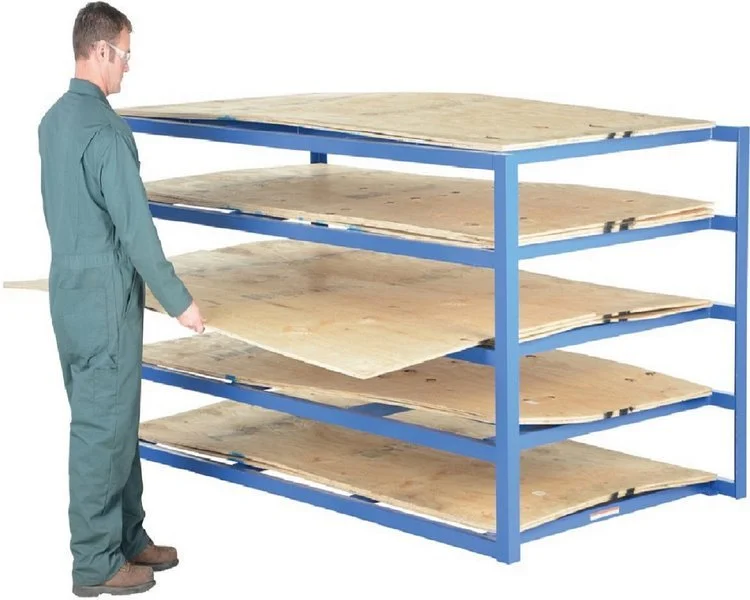In order to build a successful business, small business owners have to make many decisions regarding purchases and investments. One of these decisions may be a choice of whether to purchase a standard telescopic ladder or a rolling ladder. Rolling and folding ladders are tools that many small businesses ultimately invest in as part of their necessary equipment. There are many reasons for this decision, not least of which is the fact that they are considered much safer for use in warehouses and stockrooms than their more standard counterparts. Although there is a place for a standard telescopic ladder, the practicality, useability, and versatility of a rolling ladder make them one of the best investments small business owners can make.
Safety Benefits
There are many safety considerations that ultimately place this type of ladder at the top of the list. They are built for stability and security, making them desirable for use in many different situations. Here are a few of the most notable benefits of a rolling ladder.
Larger Steps
Conventional ladders feature thin rungs that are not more than a couple of inches wide. This can leave a lot of space for slips to occur and is not always a good option or for those needing to carry objects up or down the ladder. Rolling ladders, on the other hand, are built more like stairs, with wide steps that make it easy to have a firm foothold. With this type of ladder, it is possible to move heavy loads up and down the steps without slipping from a small rung or losing balance.
OSHA Guidelines
Because these ladders are used in many different warehouse and construction situations, they strictly conform to OSHA guidelines. This is a benefit both when protecting the company from lawsuits, and in protecting employees from unnecessarily dangerous situations that can result in injury. OSHA guidelines require that these ladders have steps of a certain width, as well as specific types of tread that are considered non-slip.
Minimize Risk of Sliding
Nearly every worker has experienced the unsettling feeling of a ladder slipping or adjusting itself as weight is placed on it. Uneven or slippery ground can pose a danger for those utilizing a ladder, especially in the case of inexperience. However, a rolling or folding ladder provides four stable legs that are less likely to slip and that distribute the weight over a larger area. A ladder of this type that is used correctly will provide a very stable surface on which to work, minimizing slips and falls.
Minimize Risk of Tipping Over
In addition to minimizing the risk of slipping, these four legs also minimize the risk of tipping over. If placed on an even surface, with the proper safety features engaged, a rolling ladder is less likely to tip or shift in any way when the worker is using it. This makes it a safe tool for most employees to use, even those who do not have extensive experience in using standard ladders. Basic safety training is a must and should be sufficient for the safe use of these ladders by any employee.
Fitted With Safety Railings
One of the best features of this type of ladder is the safety railings that are fitted to nearly every model. Workers can grip these railings for extra security while ascending or descending the ladder. This makes it easy to maintain the “3 Points of Contact” rules that are present in most facilities and which help to protect workers.
Non Slip Surfaces
As part of OSHA guidelines, the steps of these ladders are designed to be non-slip, skid proof, and very stable. These guidelines demand that the steps are “corrugated, knurled, dimpled, coated with skid-resistant material, or otherwise treated,” ensuring the safety and stability of workers using the ladder. Ladders that strictly adhere to these rules will be clearly labeled as OSHA compliant.
Basic Safety Guidelines for Proper Ladder Use
As with any workplace tool, ladders are only as safe as the employees using them. Any misuse of a ladder can result in serious injury. Therefore, it is extremely important that any employee who uses a rolling ladder be thoroughly instructed in its use before climbing up. Here are a few basic guidelines for ladder use to keep employees safe during use.
Inspection
One of the first steps that should be taken before using a ladder is an inspection of the ladder and all of its components to make sure that they are in good working condition and not damaged in any way. This especially applies to ladders that are kept outside, which can develop rust and corrosion that can compromise the integrity of the ladder. The ladder should also be inspected to make sure that it does not have any substance on it such as ice, snow, water, grease, paint, or anything else that may cause a slipping hazard. If any damages or slipping hazards are found, the ladder must be put away for repair, cleaning, or replacement and not be used.
Use for Designed Purpose
Most rolling ladders are designed to be used with the worker facing the ladder. Only specific models are built to enable users to face away from the ladder as though they are descending stairs. It is important to identify the type of ladder that is being used and to use it correctly as it was intended. In addition, workers should always check the capacity of the ladder before using it, and should never try to carry too much in one load.
Safety During Use
One of the best benefits of a rolling ladder is its extreme mobility. The ladder can be easily moved from one position to the next for quick and easy transport. However, it is extremely important to never move the ladder when another individual is anywhere on the ladder. Additionally, only the steps should be used to walk on. Workers should never step on the handrails or on anything outside of the ladder such as a shelf or tree branch. The individual should also be careful to not lean too far away from the ladder to help prevent tips. Finally, users should maintain 3-point contact at all times.
A Few More Safety Rules
Some ladders have brakes or locks on the wheels while others may automatically secure into place when weight is placed on the first stair. If the wheels have locks, always remember to lock the wheels before use. Ladders should never be placed on unstable surfaces, hills, doorways, driveways, or near traffic. Any boxes or tools should be removed from the ladder before moving to prevent falling objects. Finally, the ladder should never be modified from its original design, and workers should never try to make it taller by stacking or standing on anything on the top stair.
Rolling and folding ladders are one of the best things a small business owner can purchase for use in their warehouse or construction site. Not only are they more stable and less likely to tip than some other ladders, but they are also built like stairs often with wider steps and handrails. They are easy to move from location to location, can reach higher than many standard ladders, and many models have storage space to keep boxes and tools. As with any equipment, it is important to understand basic ladder safety and to use the ladder properly. Doing so will prevent falls and injuries. Small businesses should consider investing in this type of ladder for their warehouses, production rooms, and storerooms.
PlatformsandLadders.com is a business dedicated to providing the best products at unbelievable prices to our treasured customers. With an easy to navigate website and experienced and professional staff, we strive every day to bring the right products to businesses across the country. Our goal is to make the job of purchasing agents, homeowners, and business owners easier through our sleek and professional site.






























